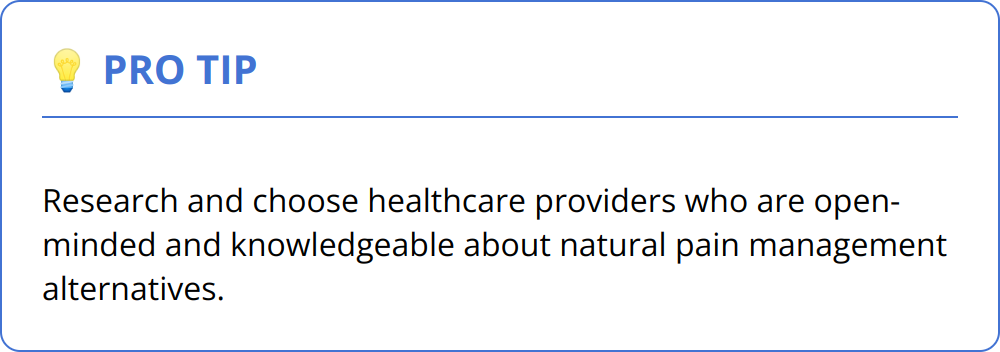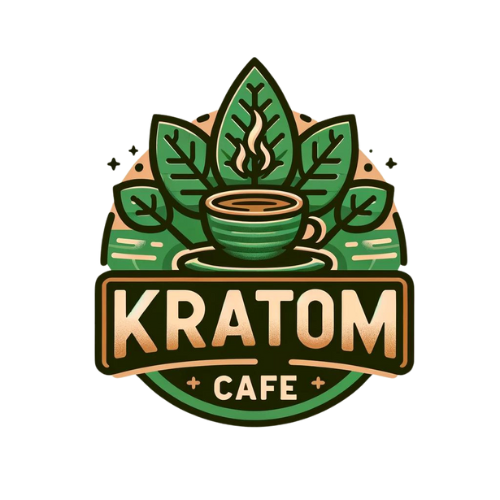Opioids have long been a cornerstone in managing chronic pain, but their use comes with significant risks. This has led many to seek safer, more natural alternatives. We at Kratom Cafe are committed to exploring these options. In this guide, we’ll examine some of the most promising natural remedies for pain relief, including kratom, CBD, and non-pharmacological methods like acupuncture and physical therapy.
Why Seek Alternatives?
Opioids, including both prescription painkillers and illegal drugs like heroin, are powerful medications for treating pain but carry a high risk of addiction and other serious side effects. According to the CDC, approximately 70% of the 70,630 drug overdose deaths in 2019 involved an opioid. This alarming statistic has significantly contributed to the search for safer, natural pain relief alternatives.
Natural alternatives to opioids are gaining attention for their ability to manage pain without the associated risks. Among these, kratom and CBD have emerged as leading options. Kratom, a tropical tree native to Southeast Asia, has compounds that produce pain-relieving effects. Meanwhile, CBD, derived from the hemp plant, is celebrated for its anti-inflammatory and pain relief properties without the psychoactive effects of THC.
However, it’s not just substances that are being looked at as alternatives. Approaches such as acupuncture and physical therapy offer pain relief by stimulating the body’s natural healing processes. A study by the National Institutes of Health showed that acupuncture can help relieve pain for conditions such as osteoarthritis, migraines, and various forms of chronic pain. Similarly, physical therapy can restore movement and function while reducing pain.
Adding to the urgency for alternatives are the risks associated with opioid use, which include dependency, overdose, and a slew of side effects ranging from nausea to more severe health issues like respiratory depression. The opioid crisis has underscored the need for safe and effective pain management strategies, pushing healthcare professionals and patients alike to explore other options.
Key Takeaways:
-
High opioid-associated overdose rates underscore the urgency for safer alternatives.
-
Kratom and CBD are leading natural alternatives known for their pain-relieving properties.
-
Non-pharmacological methods like acupuncture and physical therapy enhance the body’s natural healing.
-
Opioid risks, including addiction, push the exploration of safer pain relief options.

For those seeking more detailed insights into natural pain relievers and best practices in herbal pain management, exploring resources such as kratom for wellness and herbal pain management can be beneficial. These guides offer practical advice and a deeper understanding of how natural alternatives can fit into a comprehensive pain management strategy.
Natural Alternatives for Pain Relief
Exploring natural alternatives to opioids opens up a realm of possibilities for managing pain with fewer side effects and risks. Below, we dive into some of the most promising options.
Kratom: A Promising Herbal Remedy
Kratom, derived from the Mitragyna speciosa plant, has been recognized for its potential to alleviate pain, improve mood, and aid in opioid withdrawal. The active compounds in kratom, mitragynine, and 7-hydroxymitragynine, interact with opioid receptors but with lesser risk of dependency. For those interested in this natural remedy, starting with low doses to assess tolerance is key. Also, sourcing kratom from reputable providers is essential to ensuring quality and safety. For more on using kratom effectively, consider reading kratom for pain relief.

CBD: Pain Relief without the High
CBD, or cannabidiol, extracted from the cannabis plant, offers pain relief and anti-inflammatory properties without the psychoactive effects associated with THC. It’s critical to choose high-quality CBD products and start with a low dose, gradually increasing as needed to achieve desired effects. Topical CBD products can be particularly effective for localized pain relief.
Acupuncture and Physical Therapy: Non-Pharmacological Options
Acupuncture and physical therapy stand out as valuable pain management strategies that harness the body’s innate healing capabilities. Acupuncture involves inserting thin needles into specific body points to alleviate pain and promote well-being. It’s most effective when performed by certified practitioners and may require multiple sessions.
Physical therapy, on the other hand, aims to improve movement and function while reducing pain. Working with a licensed physical therapist to develop a customized pain management plan can be particularly effective. Combining exercises, manual therapy, and education, physical therapy not only addresses pain but also helps prevent it from reoccurring.
Tips for Choosing Natural Pain Relief:
-
Research thoroughly before trying any new treatment.
-
Consult healthcare professionals to ensure it’s safe for you.
-
Start with low doses or sessions and adjust based on your response.
By considering these alternatives, individuals can find pain relief options that align with their health goals and reduce reliance on opioids. With a focus on natural substances and the body’s healing processes, pain management can become a more holistic, less risky endeavor.
Tailoring Pain Management
Successfully managing pain with natural alternatives requires a comprehensive approach that respects the complexity of pain and the uniqueness of each individual. Transitioning from conventional opioid-based treatments to natural therapies involves several critical steps, each demanding attention to detail and proactive engagement.
Consulting Healthcare Professionals
The first step toward a safer pain management journey is to consult with healthcare professionals. It’s essential to discuss your interest in natural alternatives. Doctors, pharmacists, and specialist practitioners can provide valuable insights into how natural remedies like kratom, CBD, and non-pharmacological treatments interact with existing medications and health conditions. They can also guide dosage and highlight potential side effects, enabling you to make informed choices. For those interested in the herbal approach, a consultation with a professional knowledgeable about how to use kratom for wellness can offer tailored advice.

Creating a Personalized Pain Management Plan
Every individual’s experience with pain is unique, necessitating a personalized pain management plan. This plan should be dynamic, incorporating a mix of treatments tailored to your specific needs, lifestyle, and health status. It might combine kratom or CBD with physical therapy, acupuncture, or even yoga and meditation for a holistic approach. Establishing clear goals is crucial, be it reducing pain, enhancing mobility, or improving quality of life. Your plan should also consider your preferences and limitations, ensuring it’s both effective and sustainable.
Monitoring Progress and Adjusting as Necessary
Once your personalized plan is in action, continuous monitoring is vital. Keeping a pain diary can help track your pain levels, mood, activity, and how these change with different treatments. This documented insight is invaluable for adjusting your plan as needed. It might reveal patterns indicating when a treatment is effective or when a different approach is needed. Adjustments should always be made in consultation with healthcare professionals to ensure safety and effectiveness.
Practical Tips:
-
Start with low doses of natural remedies and gradually adjust.
-
Incorporate a variety of treatments to address pain holistically.
-
Stay informed about the latest research on natural pain relief options.
-
Be patient; some natural alternatives might take time to show results.
By taking a structured, informed approach to integrating natural alternatives into your pain management regimen, you’re not only aiming to alleviate pain but also to enhance overall well-being with minimal risks. This journey towards effective and natural pain relief is a step forward in reclaiming your quality of life without the shadow of opioid dependency.
Final Thoughts
The journey toward managing pain is deeply personal and varied. As we’ve explored the natural alternatives to opioids, such as kratom, CBD, and non-pharmacological treatments like acupuncture and physical therapy, it’s evident that a safer, holistic approach to pain management is not only desirable but necessary. The risks associated with opioids highlight the urgent need for alternatives that offer relief while minimizing dependency and side effects.
![Key Takeaways - Natural Opioid Alternatives [Guide]](https://kratomcafe.com/wp-content/uploads/2024/04/Natural_Opioid_Alternatives__Guide__4_2024_04_02_07_07_12_862565_00_00.png)
We at Kratom Cafe understand the importance of safe pain management. Our dedication to providing up-to-date, accurate information on kratom serves as a testament to our commitment to your wellness journey. Exploring Kratom Cafe can offer insights and guidance as you navigate through the myriad of natural options available for pain relief.
Engaging in open dialogues with healthcare providers is paramount. These conversations ensure that any new treatment, including natural alternatives, integrates safely with your overall health plan. Healthcare professionals can offer invaluable advice, helping tailor a pain management strategy that aligns with your individual needs and circumstances.
Continuous research is essential in the rapidly evolving field of natural pain management. Staying informed about the latest findings and methodologies enhances your understanding and empowers you to make educated decisions about your health. As new studies shed light on the effectiveness and safety of natural alternatives, staying abreast of these developments can significantly impact your pain management journey.
In conclusion, managing pain extends beyond merely alleviating symptoms. It’s about enhancing personal wellness, quality of life, and safety. With a landscape rich in natural alternatives and a community ready to support you, remember that you’re not alone in this journey. Whether it’s through kratom, CBD, or other holistic methods, your path to effective pain management is paved with knowledge, support, and the promise of a healthier, more vibrant life.

